-
 Bitcoin
Bitcoin $76,333.1139
-3.03% -
 Ethereum
Ethereum $1,457.5872
-6.44% -
 Tether USDt
Tether USDt $0.9991
-0.04% -
 XRP
XRP $1.8180
-4.86% -
 BNB
BNB $551.9557
-0.38% -
 USDC
USDC $0.9999
-0.01% -
 Solana
Solana $104.2978
-2.16% -
 TRON
TRON $0.2307
1.17% -
 Dogecoin
Dogecoin $0.1431
-3.28% -
 Cardano
Cardano $0.5648
-2.82% -
 UNUS SED LEO
UNUS SED LEO $8.9981
0.65% -
 Toncoin
Toncoin $2.9726
-1.74% -
 Chainlink
Chainlink $10.9354
-4.23% -
 Stellar
Stellar $0.2220
-4.66% -
 Avalanche
Avalanche $16.1252
-4.57% -
 Sui
Sui $1.9788
-1.91% -
 Shiba Inu
Shiba Inu $0.0...01067
-5.86% -
 Hedera
Hedera $0.1483
-0.90% -
 MANTRA
MANTRA $6.1649
-1.57% -
 Bitcoin Cash
Bitcoin Cash $270.9224
-2.74% -
 Polkadot
Polkadot $3.4254
-4.57% -
 Dai
Dai $1.0000
0.00% -
 Litecoin
Litecoin $68.6888
-3.33% -
 Ethena USDe
Ethena USDe $0.9985
-0.02% -
 Bitget Token
Bitget Token $4.0154
-1.57% -
 Pi
Pi $0.5625
-3.65% -
 Hyperliquid
Hyperliquid $11.0117
-4.56% -
 Monero
Monero $197.7621
-1.36% -
 Uniswap
Uniswap $4.8932
-4.07% -
 OKB
OKB $50.1114
-2.03%
How do I use the signature verification function of the Ledger Stax?
The Ledger Stax's signature verification function is crucial for ensuring the authenticity of crypto transactions, guiding users through setup, verification, and troubleshooting for secure operations.
Apr 05, 2025 at 12:43 pm
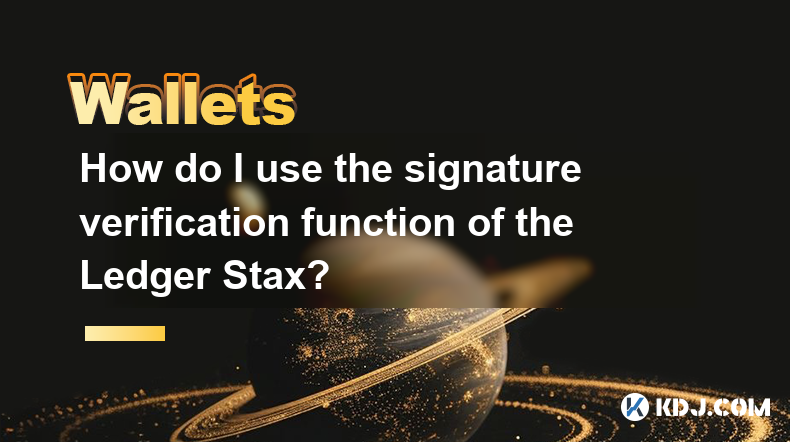
Using the signature verification function of the Ledger Stax is an essential feature for ensuring the authenticity and integrity of transactions and messages within the cryptocurrency ecosystem. This function allows you to verify signatures generated by your Ledger Stax device or other compatible devices, ensuring that the data has not been tampered with and that the signature indeed comes from the claimed source. In this article, we will guide you through the detailed process of using this feature on your Ledger Stax, ensuring you can confidently secure your cryptocurrency transactions.
Understanding the Importance of Signature Verification
Signature verification is a critical security measure in the world of cryptocurrencies. It ensures that the transactions or messages you receive are genuine and have not been altered during transmission. By verifying signatures, you can confirm that the data you are dealing with is exactly as it was intended by the sender, and that it has not been manipulated by any third party. This is particularly important in the cryptocurrency space, where the integrity of transactions is paramount to maintaining trust and security.
Preparing Your Ledger Stax for Signature Verification
Before you can use the signature verification function, you need to ensure that your Ledger Stax is properly set up and ready for use. Here are the steps to prepare your device:
- Ensure your Ledger Stax is updated to the latest firmware. You can check for updates through the Ledger Live application on your computer or mobile device.
- Connect your Ledger Stax to your computer or mobile device using the provided USB cable or Bluetooth connection.
- Unlock your Ledger Stax by entering your PIN code. This will allow you to access the device's functions, including signature verification.
Accessing the Signature Verification Function
Once your Ledger Stax is prepared, you can access the signature verification function through the Ledger Live application. Follow these steps to navigate to the correct section:
- Open the Ledger Live application on your computer or mobile device.
- Navigate to the "Manager" tab within the Ledger Live application. This tab allows you to manage the applications installed on your Ledger Stax.
- Scroll through the list of applications until you find the "Signature Verification" app. If it is not installed, you can install it from this section.
- Install the Signature Verification app by clicking on the "Install" button next to the app's name. Wait for the installation to complete.
Verifying a Signature Using Ledger Stax
With the Signature Verification app installed, you can now proceed to verify a signature. Here is a detailed guide on how to do this:
- Open the Signature Verification app on your Ledger Stax. You can do this by navigating to the app on your device and selecting it.
- Connect your Ledger Stax to your computer or mobile device if it is not already connected.
- Open the Ledger Live application and navigate to the "Signature Verification" section. This section will allow you to input the data and signature you want to verify.
- Enter the data that you want to verify. This could be a transaction hash, a message, or any other data that was signed.
- Enter the signature that you want to verify. This is the signature that was generated by the sender and should be associated with the data you entered.
- Click on the "Verify" button within the Ledger Live application. This will send the data and signature to your Ledger Stax for verification.
- Review the verification result on your Ledger Stax. The device will display whether the signature is valid or not. If the signature is valid, it means that the data has not been tampered with and the signature is genuine.
Troubleshooting Common Issues
While using the signature verification function, you may encounter some common issues. Here are some troubleshooting tips to help you resolve them:
- If the Signature Verification app is not visible in the Ledger Live application, ensure that your Ledger Stax is properly connected and that you have the latest version of Ledger Live installed.
- If the verification process fails, double-check that you have entered the correct data and signature. Any discrepancies between the entered data and the actual data will result in a failed verification.
- If your Ledger Stax displays an error message, restart the device and try the verification process again. If the issue persists, contact Ledger support for further assistance.
Ensuring Security and Best Practices
To maximize the security of your signature verification process, follow these best practices:
- Always verify signatures on your Ledger Stax rather than relying on third-party applications. This ensures that the verification process is secure and not susceptible to external manipulation.
- Keep your Ledger Stax firmware and applications up to date. Regular updates help to patch any security vulnerabilities and ensure that your device is protected against the latest threats.
- Use strong and unique PIN codes for your Ledger Stax. This adds an extra layer of security to prevent unauthorized access to your device and its functions.
Frequently Asked Questions
Q: Can I use the signature verification function to verify signatures from other cryptocurrency wallets?
A: Yes, you can use the signature verification function on your Ledger Stax to verify signatures from other compatible cryptocurrency wallets. However, ensure that the wallet supports the same signature format and that you have the correct data and signature to verify.
Q: What should I do if I suspect that a signature has been tampered with?
A: If you suspect that a signature has been tampered with, do not proceed with any transactions or actions based on that signature. Instead, contact the sender to confirm the authenticity of the data and signature. If necessary, report the issue to the relevant cryptocurrency platform or authorities.
Q: How often should I verify signatures for my cryptocurrency transactions?
A: It is recommended to verify signatures for every significant cryptocurrency transaction or message that you receive. This ensures that you are always dealing with genuine and unaltered data, maintaining the security and integrity of your transactions.
Q: Can I use the signature verification function offline?
A: Yes, you can use the signature verification function offline on your Ledger Stax. However, you will need to manually input the data and signature into the device, as you will not be able to use the Ledger Live application to facilitate the process.
Disclaimer:info@kdj.com
The information provided is not trading advice. kdj.com does not assume any responsibility for any investments made based on the information provided in this article. Cryptocurrencies are highly volatile and it is highly recommended that you invest with caution after thorough research!
If you believe that the content used on this website infringes your copyright, please contact us immediately (info@kdj.com) and we will delete it promptly.
- World Liberty Financial (WLFI), the Trump family’s crypto project, is planning to release a stablecoin
- 2025-04-09 03:50:12
- BlackRock's Ethereum-native tokenized money market fund has more than tripled in value over the past three weeks, nearing the $2 billion mark
- 2025-04-09 03:50:12
- PancakeSwap Burns Over 330,000 CAKE Tokens, Binance CZ Reacts
- 2025-04-09 03:45:12
- 5 Meme Coins That Have Stood the Test of Time and Volatility
- 2025-04-09 03:45:12
- Title: According to the National Security Bureau, China has spread misinformation about Taiwan on the island in order to share generative artificial intelligence (AI).
- 2025-04-09 03:40:13
- Dogecoin (DOGE) Price Plunges Amid Technical Shifts and Whale Activity
- 2025-04-09 03:40:13
Related knowledge

How do I send Ethereum to my Ledger wallet?
Apr 09,2025 at 03:21am
Sending Ethereum to your Ledger wallet involves a few straightforward steps, but it's crucial to follow them carefully to ensure the security of your funds. In this guide, we'll walk you through the process of transferring Ethereum to your Ledger wallet, ensuring that you understand each step and the necessary precautions. Preparing Your Ledger WalletBe...
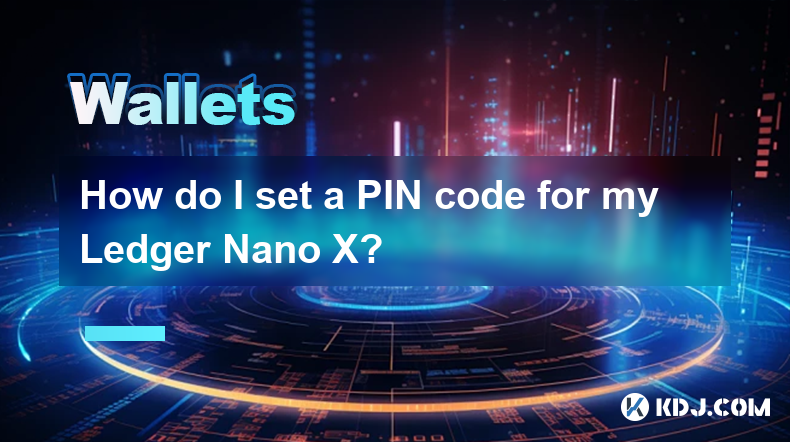
How do I set a PIN code for my Ledger Nano X?
Apr 08,2025 at 11:14pm
Setting a PIN code for your Ledger Nano X is a crucial step in securing your cryptocurrency assets. The PIN code acts as a primary layer of security, ensuring that only you can access your device. In this article, we will guide you through the process of setting up a PIN code on your Ledger Nano X, ensuring that you follow each step meticulously to main...
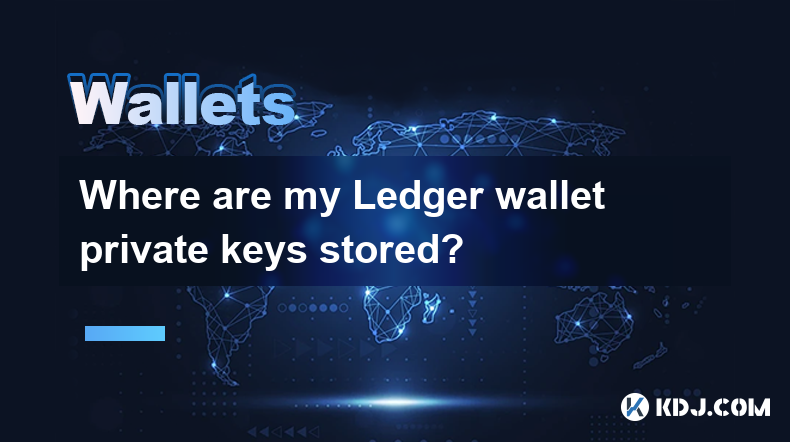
Where are my Ledger wallet private keys stored?
Apr 08,2025 at 10:35pm
When using a Ledger hardware wallet, one of the most critical aspects to understand is the storage and management of your private keys. This article will delve into the specifics of where your Ledger wallet private keys are stored, ensuring you have a comprehensive understanding of their security and accessibility. Understanding Private Keys in Ledger W...
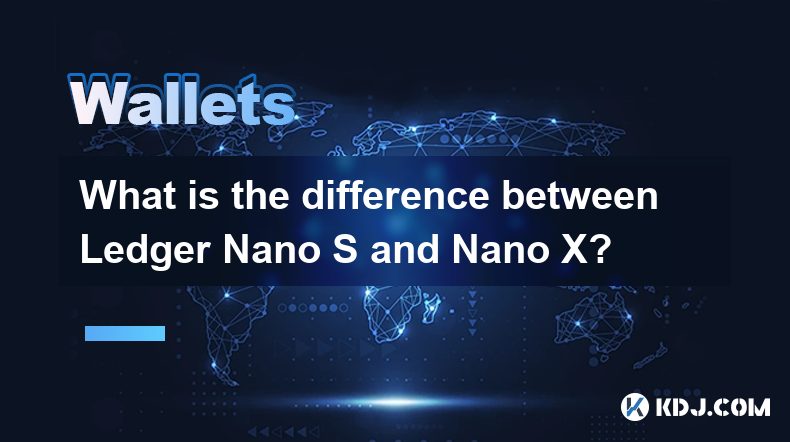
What is the difference between Ledger Nano S and Nano X?
Apr 09,2025 at 12:49am
When it comes to securing your cryptocurrencies, hardware wallets are often recommended as the safest option. Among the most popular hardware wallets are the Ledger Nano S and Ledger Nano X. Both devices are produced by Ledger, a well-known company in the cryptocurrency security industry. This article will delve into the differences between these two de...

How do I enable the Shield Transaction feature on Trezor?
Apr 08,2025 at 10:28pm
Enabling the Shield Transaction feature on Trezor involves a series of steps that allow you to enhance the privacy of your cryptocurrency transactions. This feature is particularly useful for users who want to protect their transaction history from being easily traced on the blockchain. In this article, we will guide you through the process of enabling ...
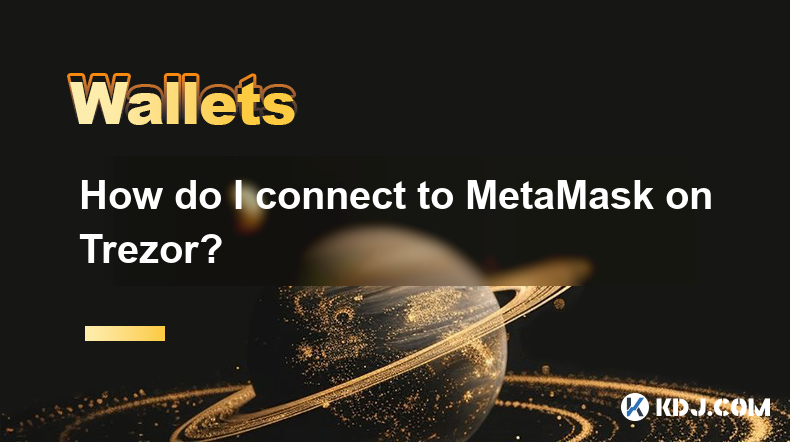
How do I connect to MetaMask on Trezor?
Apr 09,2025 at 02:35am
Connecting your Trezor hardware wallet to MetaMask is a process that enhances the security of your Ethereum and other compatible cryptocurrency transactions. This guide will walk you through the steps required to set up this integration, ensuring that you can manage your assets securely and efficiently. Preparing Your Trezor DeviceBefore you can connect...

How do I send Ethereum to my Ledger wallet?
Apr 09,2025 at 03:21am
Sending Ethereum to your Ledger wallet involves a few straightforward steps, but it's crucial to follow them carefully to ensure the security of your funds. In this guide, we'll walk you through the process of transferring Ethereum to your Ledger wallet, ensuring that you understand each step and the necessary precautions. Preparing Your Ledger WalletBe...

How do I set a PIN code for my Ledger Nano X?
Apr 08,2025 at 11:14pm
Setting a PIN code for your Ledger Nano X is a crucial step in securing your cryptocurrency assets. The PIN code acts as a primary layer of security, ensuring that only you can access your device. In this article, we will guide you through the process of setting up a PIN code on your Ledger Nano X, ensuring that you follow each step meticulously to main...

Where are my Ledger wallet private keys stored?
Apr 08,2025 at 10:35pm
When using a Ledger hardware wallet, one of the most critical aspects to understand is the storage and management of your private keys. This article will delve into the specifics of where your Ledger wallet private keys are stored, ensuring you have a comprehensive understanding of their security and accessibility. Understanding Private Keys in Ledger W...

What is the difference between Ledger Nano S and Nano X?
Apr 09,2025 at 12:49am
When it comes to securing your cryptocurrencies, hardware wallets are often recommended as the safest option. Among the most popular hardware wallets are the Ledger Nano S and Ledger Nano X. Both devices are produced by Ledger, a well-known company in the cryptocurrency security industry. This article will delve into the differences between these two de...

How do I enable the Shield Transaction feature on Trezor?
Apr 08,2025 at 10:28pm
Enabling the Shield Transaction feature on Trezor involves a series of steps that allow you to enhance the privacy of your cryptocurrency transactions. This feature is particularly useful for users who want to protect their transaction history from being easily traced on the blockchain. In this article, we will guide you through the process of enabling ...

How do I connect to MetaMask on Trezor?
Apr 09,2025 at 02:35am
Connecting your Trezor hardware wallet to MetaMask is a process that enhances the security of your Ethereum and other compatible cryptocurrency transactions. This guide will walk you through the steps required to set up this integration, ensuring that you can manage your assets securely and efficiently. Preparing Your Trezor DeviceBefore you can connect...
See all articles






















































































